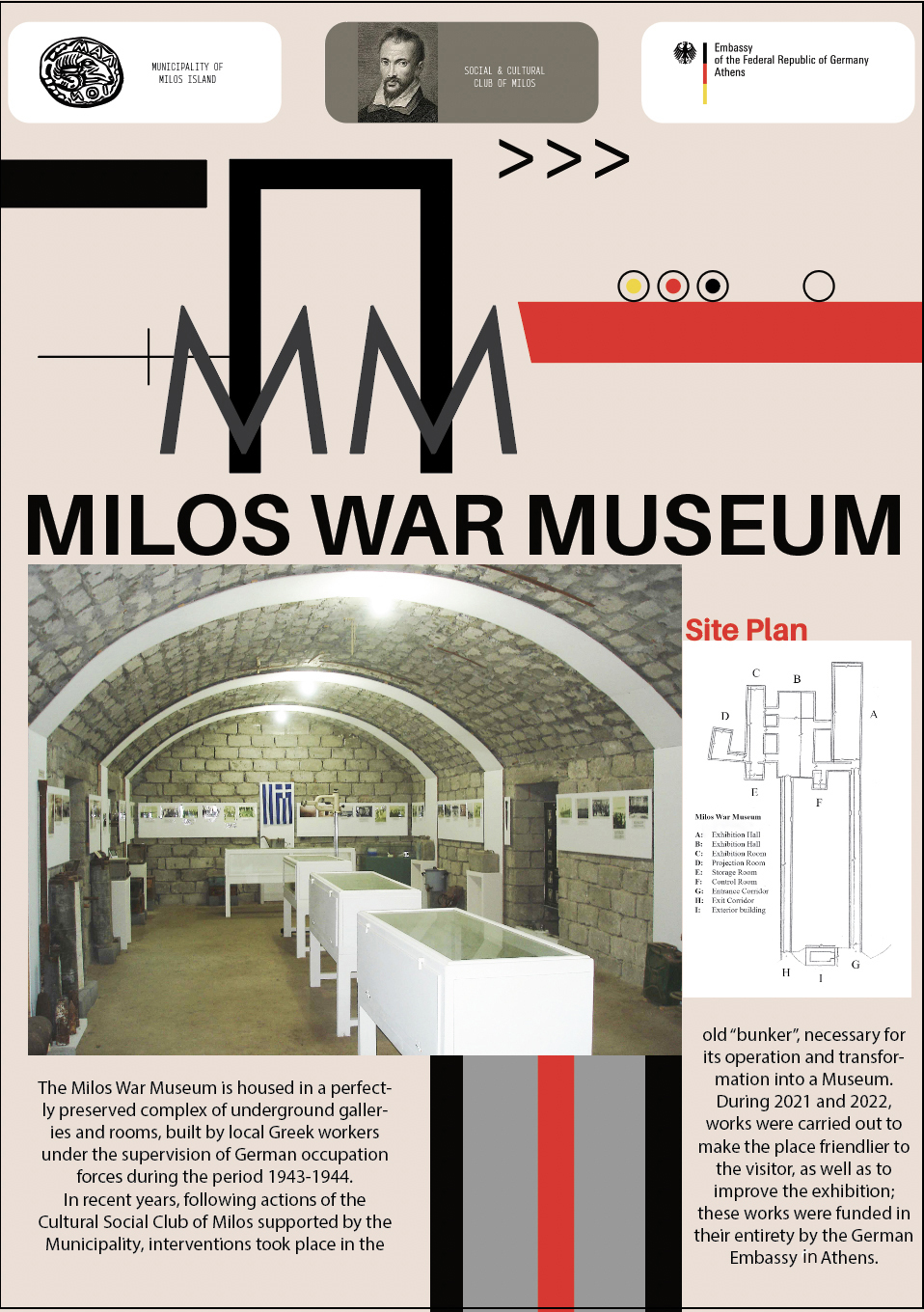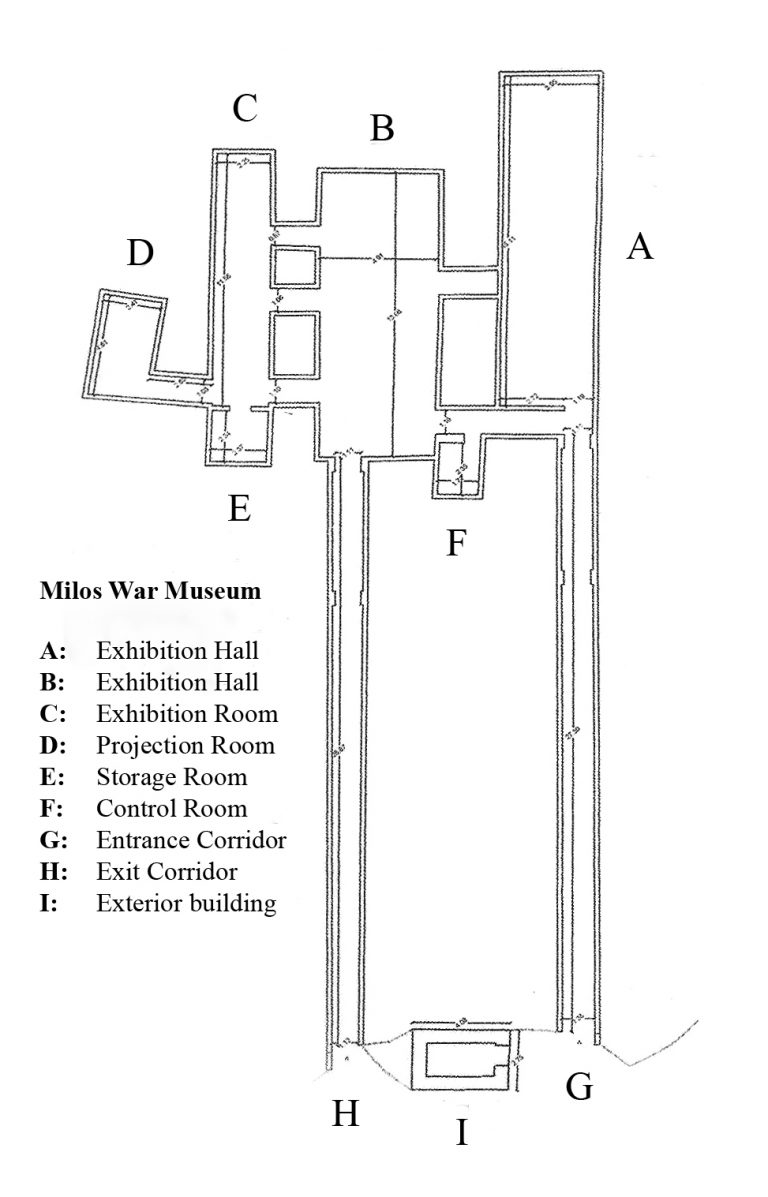War Museum

Location
The museum is located just between the villages Plaka and Plakes, only 250 m away from the bus stop and the free parking area of Plaka.
The distance from Adamas, the port of the island, is about 5 km. and the buses run between villages every hour.
A good combination would be to visit the place in the morning hours, just after visiting the archeological museum in Plaka or the ruines of the ancient city in the next village of Tripiti. But it is also a great idea in the evening, during the magical sunset of Kastro – Plaka.
The Underground Refuge
The construction of the underground “bunker” at “Flaris”, is to be named amongst a large number of fortification projects which were planned and carried out during World War II.
Employing as method of construction that of compulsory labour of the locals, these projects aimed at serving the Nazi occupation troops who remained on the island for 4 years. The project at “Flaris” began towards the end of 1943 and as early as mid-1944 the “bunker” was ready to operate as scheduled, i.e. as an auxiliary hospital for the men of the “Garrison ofMilos”.
Towards the end of 1944, due to the intense bombardments by the
Allies, the operation of the main military hospital, housed in a
neighboring building of an ex-elementary school, ceased temporarily;
all medical activities were then transferred to the “bunker” and
remained there till the beginning of 1945.
Closely tied to the history of the gallery-underground hospital, was
the presence on Milos of the German military surgeon, Dr. Hans Leber
(a reference with details for him will be made on the relevant page of
WWII). Leber was head of the hospitals on the island (both military
and civilian) since June 1943.
In recent years, following actions of the Cultural & Social Club of
Milos supported by the Municipality, interventions took place in the
old “bunker”, necessary for its operation and transformation into War
Museum of Milos. Leading role in this was played by Mr. Loukianos
Komis, president of the Cultural and Social Club of Milos for many
years, as well as by
the writer Grigoris Belivanakis (+).
During 2021 and 2022, works were carried out to make the place
friendlier to the visitor, as well as to improve the exhibition; these
works were financed in their entirety by the German Embassy in Athens
(funds retrieved from the German-Greek Future Fund).


Site Plan & Construction
The auxiliary underground hospital, i.e. the gallery in the area of“Flaris”, in the south foothills of Kastro, began to be dug in the
last months of 1943. It consisted of two long corridors, allowing
entrance and exit respectively, two spacious elongated chambers with beds for the patients, a narrower auxiliary room as well as threesmaller auxiliary spaces for the storage of hospital material. The gallery was dug into the local rock, after volumes of earth and stone had been removed (following blasting). The “walls” of the gallery were subsequently covered by cinder blocks made on the spot. The ceiling of the two central chambers was vaulted on purpose, for greater resistance in case of bombing, and the vaults were made of cinder
blocks as well. These vaults were also originally covered by large white sheets (and so were probably the vertical walls), on the one hand for reasons of neatness or aesthetics, on the other hand perhaps in an attempt for (elementary) diffusion of the light in the chambers.
Despite the passing of so many decades, the quality of construction in the gallery is still visible, and impresses the visitor more than anyother object of the exhibition.